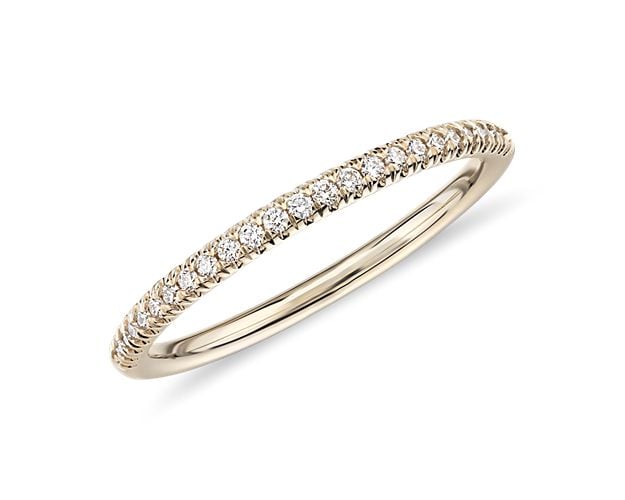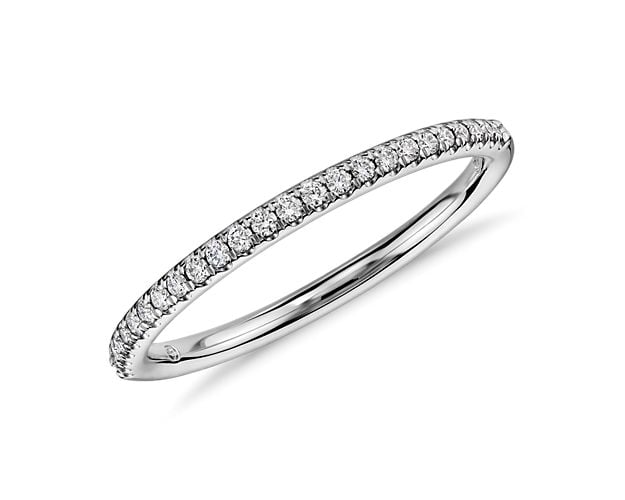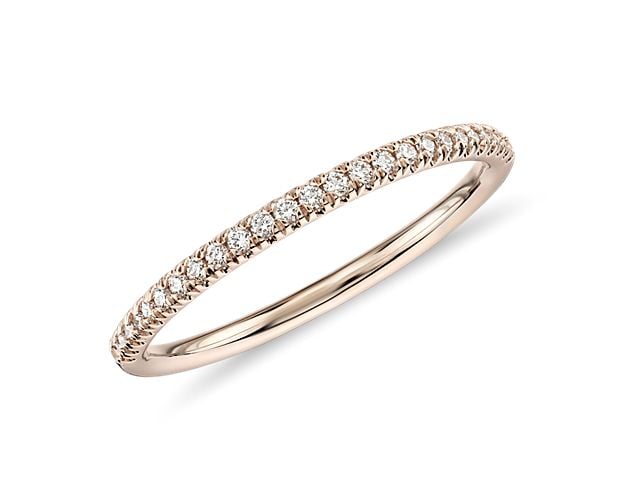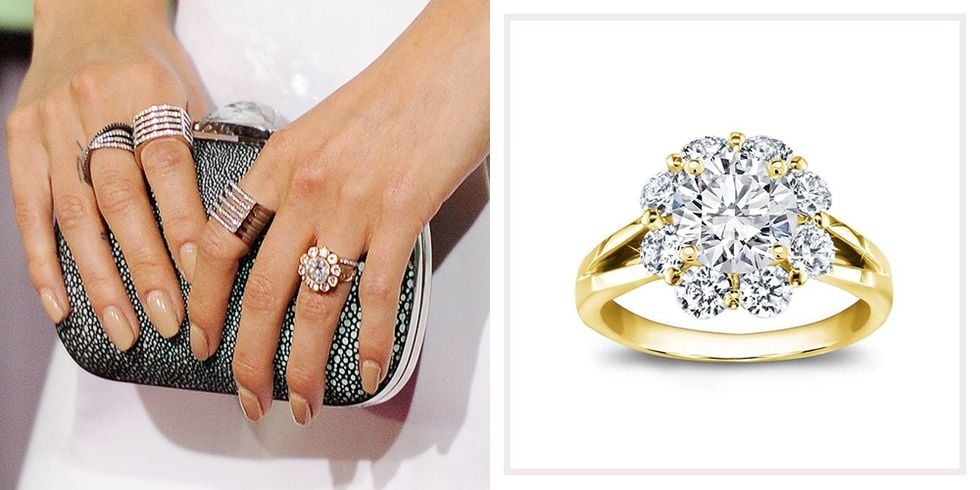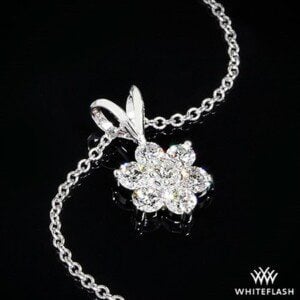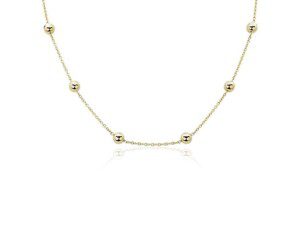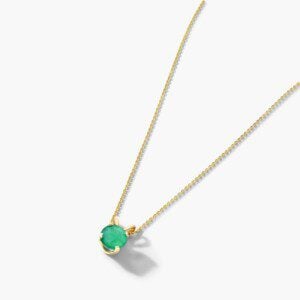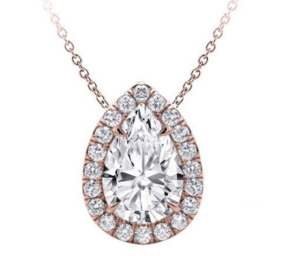14K gold, also known as 14-karat gold, is a popular and valuable precious metal that holds a special place in the world of jewelry and luxury items. This alloy is renowned for its stunning appearance and durability, making it a sought-after choice for crafting various jewelry pieces, including rings, necklaces, earrings, and more. In this introduction, we’ll provide a brief overview of 14K gold, its unique properties, and touch upon its historical significance and origin.
Overview of 14K Gold
14K gold is an alloy made by mixing pure gold (24 karats) with other metals, typically copper, silver, or palladium, in specific proportions. The “K” in 14K stands for karat, which is a measurement of the gold content in the alloy. In 14K gold, 58.3% of the metal is pure gold, while the remaining 41.7% consists of other metals. This composition strikes a balance between the alluring yellow color and the durability of the resulting alloy, making it ideal for jewelry and other decorative items.
Historical Significance and Origin
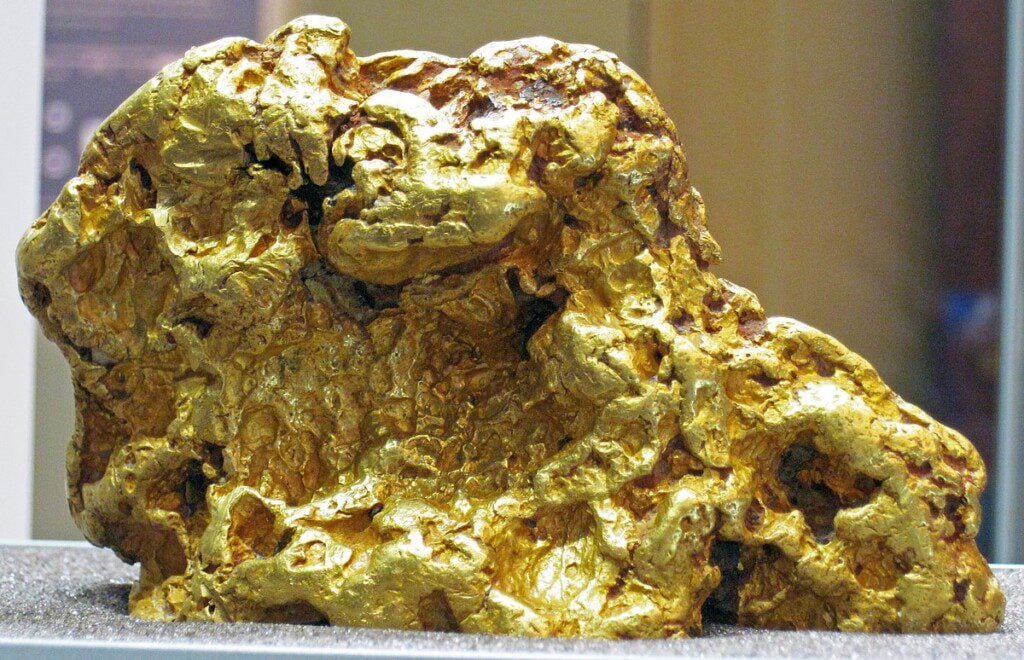
Gold has been treasured and used by human civilizations for thousands of years, and its history is deeply intertwined with human culture, economics, and artistry. The origins of gold mining and usage date back to ancient civilizations, such as the Egyptians, who crafted exquisite gold jewelry as early as 2600 BCE. Throughout history, gold has been associated with wealth, power, and prestige.
The concept of karats, which denotes the purity of gold, can be traced back to ancient Mesopotamia. The term “karat” is believed to have been derived from the carob tree seeds, which were historically used as a reference for weighing precious metals due to their consistent weight. These seeds were used as a standard for measuring gold purity, with each seed representing a specific proportion of pure gold in an alloy.
While 14K gold may not have the highest purity compared to 18K or 24K gold, its durability and captivating color have made it a popular choice for jewelry-making over the centuries. It strikes a balance between the softness of pure gold and the durability required for everyday wear, making it an excellent choice for crafting intricate jewelry designs that can withstand the test of time.
14K gold is a versatile and historically significant precious metal known for its beauty and durability. Its journey through time has seen it evolve from ancient civilizations to the modern world, where it continues to be cherished and used in the creation of exquisite jewelry and luxury items.
Looking for the perfect diamond to pair with your 14K gold jewelry? Check out PriceScope's comprehensive natural and lab-grown diamond search tool for a curated selection of loose diamonds. Explore Diamonds
1. Physical Properties
Color and Appearance
14K gold is renowned for its distinctive and alluring appearance. Its color is a rich, warm yellow hue, which is often associated with the classic look of gold. This warm, golden color is one of the key reasons why 14K gold is a preferred choice for jewelry-making. It exudes an unmistakable sense of luxury and elegance, making it highly appealing to both artisans and consumers.
Images from left: Yellow, White and Rose Gold
Durability and Hardness
While pure gold (24K) is a relatively soft and malleable metal, 14K gold is significantly more durable due to the addition of alloying metals, such as copper, silver, or palladium. These added metals enhance the gold’s hardness, making it less susceptible to scratches, dents, and deformations. This durability is particularly important for jewelry pieces that are subjected to daily wear and potential impact.
The hardness of 14K gold varies depending on the specific alloy composition, but it generally falls within the range of 38 to 44 on the Vickers hardness scale. This hardness level ensures that 14K gold jewelry remains in excellent condition over time, with minimal signs of wear.
Malleability and Ductility
Despite its increased hardness compared to pure gold, 14K gold retains a notable degree of malleability and ductility. This means that skilled jewelers can work with 14K gold to create intricate and detailed designs. It can be forged, bent, and shaped into various forms without cracking or breaking, allowing artisans to craft delicate and ornate jewelry pieces.
The malleability and ductility of 14K gold make it an ideal choice for intricate filigree work, engraving, and other decorative techniques that require precision and finesse.
Melting Point and Other Relevant Physical Characteristics
The melting point of 14K gold can vary slightly depending on the specific alloy composition, but it generally falls in the range of 1,640°C to 1,740°C (2,984°F to 3,164°F). This relatively high melting point is an advantage when it comes to casting and crafting jewelry, as it allows for precise control during the manufacturing process.
Additionally, 14K gold is known for its resistance to tarnish and corrosion, making it a low-maintenance metal for jewelry. It does not react with moisture, air, or most common chemicals, ensuring that your 14K gold jewelry remains beautiful and lustrous with minimal care.
2. Composition and Purity
14K gold is an alloy composed of pure gold (24 karats) and other metals, typically copper, silver, or palladium. The “K” in 14K stands for karat, which is a measure of the gold content in the alloy. The remaining portion consists of alloying metals. In the case of 14K gold, it contains 58.3% pure gold and 41.7% alloying metals.
Here’s a breakdown of the composition:
- 14K gold: 58.3% pure gold
- Alloying metals: 41.7%
Explanation of Karat/Purity
The concept of karats is used to denote the purity of gold in an alloy. Pure gold is 24 karats, meaning it is 100% gold with no other metals mixed in. As the karat number decreases, the gold content in the alloy decreases, and the percentage of alloying metals increases.

For example:
- 18K gold contains 75% pure gold and 25% alloying metals.
- 14K gold contains 58.3% pure gold and 41.7% alloying metals.
- 10K gold contains 41.7% pure gold and 58.3% alloying metals.
The higher the karat number, the more “pure” the gold, and the more intense and rich its color. However, higher karat gold alloys are also softer and more susceptible to scratching and bending.
Benefits and Drawbacks of Different Purity Levels
Higher Purity (e.g., 18K or 24K)
- Benefits: Higher purity gold has a deeper, more vibrant color, often described as “rich” or “intense.” It is also less likely to cause skin allergies or reactions, as pure gold is hypoallergenic.
- Drawbacks: Pure gold (24K) is very soft and can easily scratch or deform, making it less suitable for jewelry that undergoes daily wear and tear. Additionally, it is more expensive due to its higher gold content.
Moderate Purity (e.g., 14K)
- Benefits: 14K gold strikes a balance between color, durability, and cost. It retains a beautiful golden color while being significantly more durable than higher purity gold. It’s a practical choice for everyday jewelry.
- Drawbacks: Some individuals with sensitivities to certain metals in the alloy may experience skin reactions, although this is relatively rare.
Lower Purity (e.g., 10K)
- Benefits: 10K gold is the most durable and affordable option among gold alloys. It is less likely to scratch or deform, making it suitable for rugged jewelry pieces.
- Drawbacks: The color of 10K gold may be less vibrant compared to higher purity alloys. Some people prefer the richer color of higher karat gold.
The purity of gold in an alloy, expressed in karats, affects its color, durability, and cost. While higher purity gold has a more intense color, it is softer and more expensive. Lower purity gold, like 14K or 10K, offers a balance between color and durability, making it a practical choice for various jewelry applications. The choice of purity level ultimately depends on personal preferences, budget, and the intended use of the jewelry.
Engage with fellow jewelry enthusiasts and experts in PriceScope's vibrant online community. Share your passion, seek advice, and stay up-to-date with the latest trends and discussions. Join the Community
3. Popular Uses for 14K Gold
Jewelry Types
14K gold is widely utilized in the creation of various jewelry pieces due to its ideal balance of durability and beauty. Some of the most common types of jewelry made from 14K gold include:
- Rings: Engagement rings, wedding bands, and fashion rings often feature 14K gold settings. Its durability makes it suitable for everyday wear, making it a popular choice for these sentimental pieces.
Nikki Reed elegantly adorns the exquisite Adiamor Flower Halo Diamond Engagement Ring.
- Necklaces: Pendants, chains, and necklaces of all styles frequently incorporate 14K gold. The warm color and resistance to tarnish make it a perfect choice for showcasing precious gemstones or as a standalone piece.
Check out this stunning collection of 14K gold jewelry from our preferred jewelry stores:
- Bracelets: 14K gold bracelets come in various designs, from delicate chains to chunky bangles. Its malleability allows for intricate link designs and unique patterns.
- Earrings: Whether studs, hoops, or dangle earrings, 14K gold provides an attractive and durable base for showcasing gemstones and enhancing the overall appeal of earrings.
- Watches: Many high-end timepieces use 14K gold for watch cases and bands. The metal’s corrosion resistance and classic appearance complement luxury watch designs.
In search of 14K gold jewelry to complement your collection? Explore PriceScope's jewelry search tool for a wide range of jewelry that suit your style and budget. Find Jewelry
4. Care and Maintenance of 14K Gold
Cleaning Recommendations
Step 1: Mild Soapy Water
To clean 14K gold jewelry, use a solution of warm water and a few drops of mild dish soap. Gently scrub the piece with a soft brush or cloth to remove dirt and oils. Rinse with clean water and pat dry with a soft, lint-free cloth.
Step 2: Commercial Jewelry Cleaners
You can also use commercial jewelry cleaning solutions designed for gold. Follow the manufacturer’s instructions carefully to avoid any potential damage.
Step 3: Ultrasonic Cleaners
Ultrasonic jewelry cleaners can be effective for cleaning 14K gold, but exercise caution. Make sure the jewelry is in good condition and doesn’t have loose stones, as the vibrations can dislodge them.
Storage Advice
Individual Pouches or Boxes: Store your 14K gold jewelry separately in soft pouches or individual jewelry boxes to prevent scratching and tangling. This also helps minimize contact with other metals that may cause tarnishing.
Anti-Tarnish Strips: Consider placing anti-tarnish strips or silica gel packets in your jewelry storage to absorb moisture and reduce the risk of tarnish.
Avoid Humidity: Store your jewelry in a cool, dry place away from direct sunlight and humidity, as excessive moisture can contribute to tarnishing.
Tips to Prevent Damage or Tarnishing
- Remove Before Activities: Take off your 14K gold jewelry before engaging in activities that might expose it to chemicals, abrasive materials, or rough surfaces. This includes activities like swimming (chlorine can affect gold), gardening, and heavy lifting.
- Avoid Contact with Perfume and Lotions: Perfumes, lotions, and cosmetics can contain chemicals that may dull the shine of your jewelry over time. Apply these products before putting on your jewelry, and allow them to dry completely.
- Regular Inspections: Periodically inspect your jewelry for loose stones, damaged prongs, or signs of wear. Promptly address any issues by taking it to a professional jeweler for repairs.
- Professional Cleaning: Consider having your 14K gold jewelry professionally cleaned and inspected by a jeweler annually. They can check for potential issues and restore the piece to its original luster.
- Avoid Excessive Friction: Avoid wearing multiple jewelry pieces that may rub against each other, as this can cause scratches. If wearing multiple pieces, choose those with smooth surfaces.
By following these care and maintenance recommendations, you can ensure that your 14K gold jewelry remains in beautiful condition for years to come. Regular cleaning, proper storage, and mindful wear will help preserve its shine and minimize the risk of damage or tarnishing.
5. Top 3 most recommended vendors
- Overview: Whiteflash is a well-known online jeweler specializing in high-quality diamonds and custom-designed jewelry. They are known for their commitment to quality and craftsmanship.
- Unique Offerings: Whiteflash is renowned for their “A CUT ABOVE®” diamonds, which are considered some of the best-cut diamonds in the industry. They offer a wide range of engagement rings, wedding bands, and other fine jewelry. Their customization options allow customers to create unique and personalized pieces.
- View Whiteflash Website
James Allen
- Overview: James Allen is an online jeweler recognized for its extensive selection of engagement rings, loose diamonds, and fine jewelry. They are known for their innovative 360-degree diamond viewing technology, which provides customers with a detailed view of the diamonds they are considering.
- Unique Offerings: James Allen offers a vast array of engagement ring settings, allowing customers to choose from a wide variety of designs and metals, including 14K gold. They are known for their user-friendly website and transparent pricing.
- View James Allen Website
Blue Nile

- Overview: Blue Nile is a prominent online jeweler known for its extensive inventory of diamonds, engagement rings, and fine jewelry. They are known for their focus on transparency and educational resources.
- Unique Offerings: Blue Nile offers a wide range of engagement rings in various styles, including classic and contemporary designs. They provide a range of customization options, and customers can choose from various metals, including 14K gold, for their jewelry pieces.
- View Blue Nile Website
6. Advantages of Choosing 14K Gold
Benefits in Jewelry-Making
- Durability: 14K gold is significantly more durable than higher purity gold alloys like 18K or 24K. This durability makes it an excellent choice for jewelry that is worn daily, such as engagement rings and wedding bands. It can withstand the rigors of everyday wear without easily scratching or deforming.
- Design Versatility: Jewelers appreciate 14K gold for its malleability, which allows for intricate and detailed designs. It can be crafted into various styles, from classic to contemporary, making it suitable for a wide range of jewelry pieces.
- Color and Luster: 14K gold retains the classic, warm yellow color associated with gold, making it visually appealing. Its vibrant hue complements a variety of gemstones and adds a touch of luxury to any jewelry piece.
Longevity and Value Retention
- Value: 14K gold jewelry tends to be more affordable than higher purity gold jewelry due to its lower gold content. This makes it an accessible choice for individuals looking for quality jewelry without an exorbitant price tag.
- Value Retention: While the price of gold can fluctuate in the market, 14K gold jewelry generally retains its value well over time. The combination of its gold content and durability ensures that it can be passed down through generations as a cherished heirloom.
Hypoallergenic Properties and Health Benefits
- Hypoallergenic: 14K gold is less likely to cause allergic reactions compared to some other metals. It is often a suitable choice for individuals with sensitive skin or metal allergies. However, it’s essential to be aware that the alloying metals in 14K gold, such as copper or nickel, can still cause reactions in some individuals. If you have known metal sensitivities, consult with a jeweler about hypoallergenic alloy options, such as 14K white gold with palladium instead of nickel.
7. Things to Consider with 14K Gold
Potential Allergies or Skin Reactions: While 14K gold is generally less likely to cause skin allergies compared to some other metals, it can still contain alloying metals that may trigger reactions in sensitive individuals. Be aware of any known metal allergies and consider hypoallergenic options if needed.
Wear Over Time: Like all metals, 14K gold may show signs of wear over time, especially in pieces that are subjected to daily use. This can include minor scratches and surface patina. Regular cleaning and maintenance can help preserve its appearance.
Comparisons with Other Metals: When choosing a metal for your jewelry, consider the differences between 14K gold and other options like white gold and platinum. White gold offers a similar appearance to platinum at a lower price point, while platinum is known for its durability and natural white color but comes with a higher price tag.
Ultimately, the choice of metal should align with your personal preferences, budget, and any specific needs or sensitivities you may have.
8. Reviews
Before making a purchase, read PriceScope’s jeweler reviews to gain insights into the reputations and customer experiences of jewelry vendors. Make informed decisions and shop with confidence.
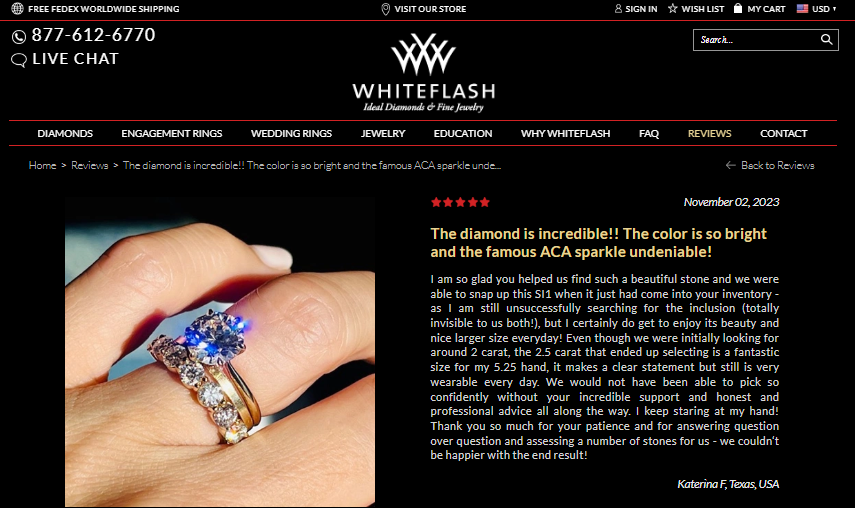
Source: Whiteflash
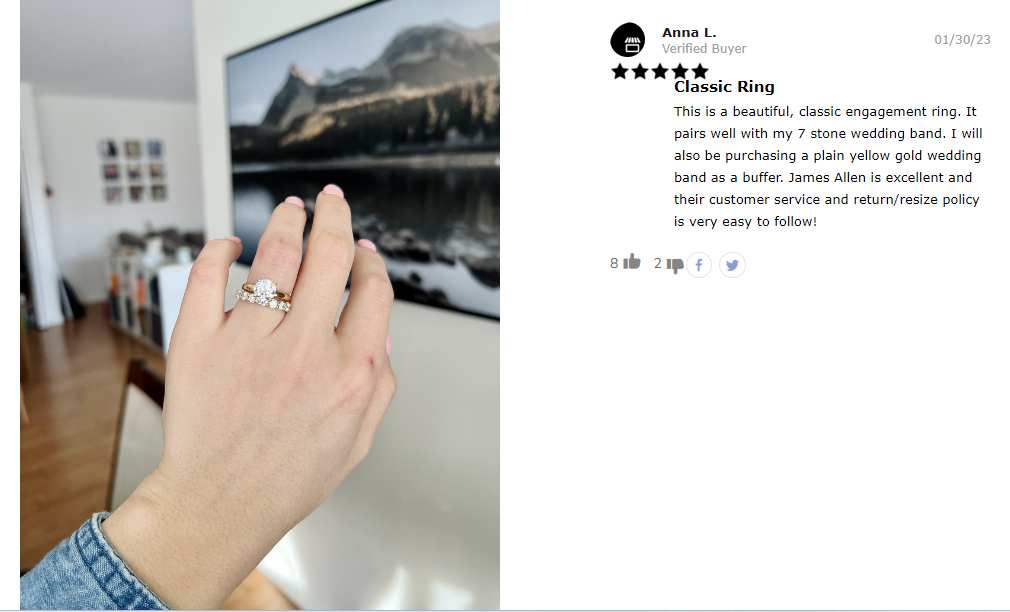
Source: James Allen
Deepen Your Jewelry Knowledge: Explore the world of diamonds and jewelry with PriceScope's extensive education resources. Learn about the 4Cs, diamond shapes, gemstone choices, and more to make informed decisions.
Final Thoughts
If you’re on the hunt for 14K gold jewelry, we encourage you to explore the offerings of reputable vendors like Whiteflash, James Allen, and Blue Nile. These well-known jewelers have established themselves as trusted sources for exquisite jewelry, and they may have a range of 14K gold pieces to suit your preferences.

